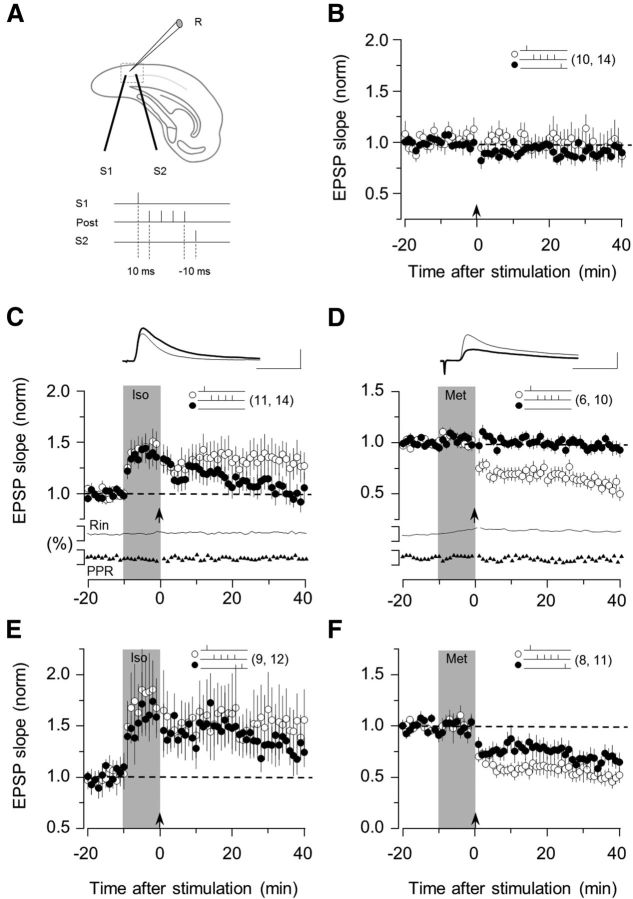Figure 1.
β- and α1-adrenergic agonist enables associative LTP and LTD. A, Experimental schematics. Top, EPSPs were recorded in layer II/III PV interneurons by stimulating the underlying layer IV at two sites (S1 and S2). Bottom, Conditioning paradigm. During each pairing epoch (200 at 1 Hz), stimulation of one or both pathways was paired with a postsynaptic burst of four action potentials (100 Hz). B, In control ACSF, the pairing paradigm (arrow) does not affect the EPSPs. C, Brief application of the β- agonist isoproterenol (Iso: 10 μm, 10 min; gray bar) promotes the induction of homosynaptic LTP. D, The α1-agonist methoxamine (Met: 5 μm, 10 min; gray bar) promotes the induction of homosynaptic LTD. In both cases, the polarity of plasticity was independent of the order of presynaptic and postsynaptic activation. Only LTP was induced with isoproterenol (E), and only LTD with methoxamine (F). The number of experiments is indicated in parentheses. C, D, Superimposed traces are averages of 10 consecutive responses recorded right before (thin line) and 30 min after conditioning (thick line). Calibration: 2 mV, 10 ms. Note the absence of changes in the normalized paired-pulse ratio and membrane input resistance (Rin), which are displayed below A and B. Data are mean ± SEM.

